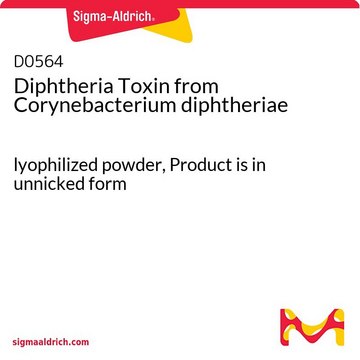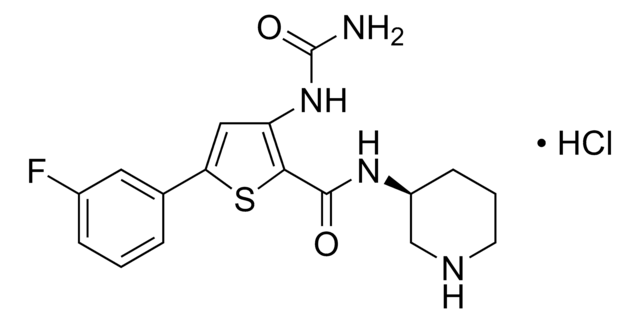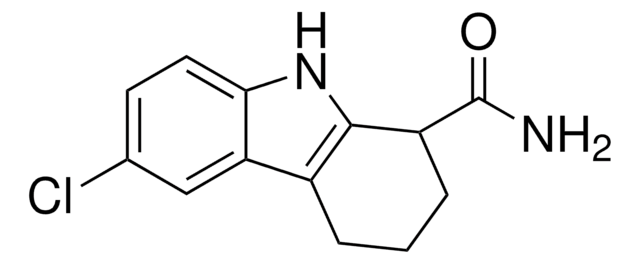322326
Diphtheria Toxin, Unnicked
from Corynebacterium diphtheriae, Major band under reduced conditions (SDS-PAGE), <15% nicking, solid, protein synthesis inhibitor, Calbiochem®
Sinonimo/i:
DTx
About This Item
Prodotti consigliati
Nome del prodotto
Diphtheria Toxin, Unnicked, Corynebacterium diphtheriae, Diphtheria toxin catalyzes ADP-ribosylation of eukaryotic aminoacyltransferase II (EF2) using NAD as substrate. Activation requires nicking with a protease followed by reduction with DTT.
Livello qualitativo
Descrizione
RTECS - XW5807200
Stato
solid
Produttore/marchio commerciale
Calbiochem®
Condizioni di stoccaggio
OK to freeze
Condizioni di spedizione
ambient
Temperatura di conservazione
2-8°C
Descrizione generale
Applicazioni
Azioni biochim/fisiol
Eukaryotic aminoacyltransferase II (EF2)
Attenzione
Stato fisico
Ricostituzione
Risultati analitici
Altre note
Note legali
Avvertenze
Danger
Indicazioni di pericolo
Consigli di prudenza
Classi di pericolo
Acute Tox. 1 Inhalation - Acute Tox. 1 Oral
Codice della classe di stoccaggio
6.1A - Combustible acute toxic Cat. 1 and 2 / very toxic hazardous materials
Classe di pericolosità dell'acqua (WGK)
WGK 3
Punto d’infiammabilità (°F)
Not applicable
Punto d’infiammabilità (°C)
Not applicable
Certificati d'analisi (COA)
Cerca il Certificati d'analisi (COA) digitando il numero di lotto/batch corrispondente. I numeri di lotto o di batch sono stampati sull'etichetta dei prodotti dopo la parola ‘Lotto’ o ‘Batch’.
Possiedi già questo prodotto?
I documenti relativi ai prodotti acquistati recentemente sono disponibili nell’Archivio dei documenti.
Il team dei nostri ricercatori vanta grande esperienza in tutte le aree della ricerca quali Life Science, scienza dei materiali, sintesi chimica, cromatografia, discipline analitiche, ecc..
Contatta l'Assistenza Tecnica.









